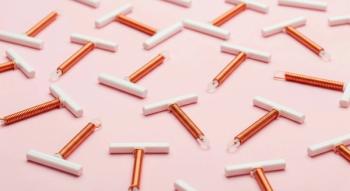Electroporation therapy is effective for treating vulvovaginal laxity up to 12 months, according to a recent study published in the Journal of Clinical Medicine.
Takeaways
- Electroporation therapy has been found effective for treating vulvovaginal laxity for up to 12 months, as demonstrated in the Jett Plasma Medical for Her II study published in the Journal of Clinical Medicine.
- Vulvovaginal laxity, characterized by a loss of tone and elasticity in the vaginal area, can result from factors like childbirth, aging, and obesity, affecting sexual satisfaction and confidence.
- The study involved 91 healthy women with vaginal laxity, and electroporation treatment led to statistically significant improvements in vulvovaginal laxity, as measured by the Vaginal Laxity Questionnaire (VLQ) scores, as well as improvements in urinary incontinence symptoms (IIQ-7 and UDI-6) and sexual function (FSFI).
- Electroporation involves creating temporary nanopores in cell walls by applying high-voltage electrical pulses, which reduces vaginal mucosa and submucosal tissue atrophy and improves tissue cohesion.
- The study's results suggest that electroporation therapy can be an effective option for treating vaginal laxity, offering improvements in patient-reported outcomes related to vaginal laxity, urinary incontinence, and sexual function.
Vaginal laxity, indicated by a loss of tone or elasticity of the vagina, is often caused by childbirth. Following childbirth, the vaginal walls may be stretched or widened because of weakened pelvic floor muscles. This reduces excitement during sexual activity, causes difficulty achieving orgasm, and leads to a loss of confidence.
Other risk factors for vaginal laxity include aging and obesity. Treatment options include pelvic floor exercises, vaginal rejuvenation devices, and vaginal surgery. The Jet Plasma for Her II (Compex Ltd., Brno, Czech Republic) study was conducted to evaluate the safety and efficacy of electroporation as vaginal laxity treatment.
Electroporation creates small temporary nanopores in the cell walls by applying a high-voltage electrical pulse to the cell membrane. This decreases vaginal mucosaand submucosal tissue atrophy and improves tissue cohesion.
The Jet Plasma for Her II study began in November 2019 and includes 91 patients. Participants are healthy women aged 18 years and older with vaginal laxity, with self-reported perceptions defined on the vaginal laxity questionnaire (VLQ).
Participants also had a negative pregnancy test and no dysplasia within 36 months before treatment. Exclusion criteria included epilepsy, metal implants, skin diseases or inflammation in the treated area, pregnancy, collagen vascular disease, vulvovaginal oncological disease, urinary tract infection, and untreated or poorly treated vulvovaginal conditions.
Further exclusion criteria included vagina birth defects, synechia of vulva, stenosis and strictures of the vagina, vaginal lasers, prior reconstructive vaginal surgery, vaginal injections of fat or fillers within 6 months, and body mass index of 35 and above.
Self-report questionnaires were completed by participants before treatment and at 1-, 3-, 6-, and 12-month follow-up visits. These questionnaires included the VLQ, the female sexual function index (FSFI), the sexual satisfaction questionnaire (SSQ), the short forms of the urogenital distress inventory (UDI-6), and the incontinence impact questionnaire (IIQ-7).
No vaginal laxity was determined by a VLQ score of at least 5. The psychosocial impact of incontinence was evaluated through the IIQ-7, with a total score ranging from 0 to 100. Sexual function was assessed using the FSFI, and sexual satisfaction through the SSQ. Finally, the UDI-6 is a condensed version of a condition-specific quality of life instrument.
The electroporation treatment was performed 3 times and used an electric current of 2.8 mA with a voltage of 5 kV. Each application lasted approximately 7 and a half minutes.
There were 91 patients aged a median 48.6 years included in the analysis. A statistically significant difference was found in actively treated patients vs those treated with placebo, with an average VLQ value of 3.98 in actively treated patients and 2.68 in the placebo group.
From the first treatment to last follow-upan average improvement from 3.15 to 4.27 was observed in actively treated patients. This was an improvement of 1.22, compared to a nonsignificant improvement of 0.22 observed in the placebo group.
The most significant difference was found between the first treatment and second control, with the highest VLQ value of 4.57 observed in the second control. At the first treatment, 15.76% of patients actively treated reported no vaginal laxity, vs 0% of the placebo group. In the second control, 45.7% of actively treated patients reported no vaginal laxity, vs 0% of the placebo group.
Results from the IIQ-7 and UDI-6 questionnaires associated improvements in vaginal laxity with improved symptoms of urinary incontinence. FSFI scores were also significantly improved in actively treated patients compared to the placebo group.
SSQ scores were not significantly different between both groups. However, overall significant efficacy was observed when treating vaginal laxity withelectroporation therapy.
Reference
Fait T, Baltazár T, Bubenickova L, et al. Treatment of vulvovaginal laxity by electroporation: the Jett Plasma Medical for Her II study. J Clin Med. 2023;12(19):6234. doi:10.3390/jcm12196234











